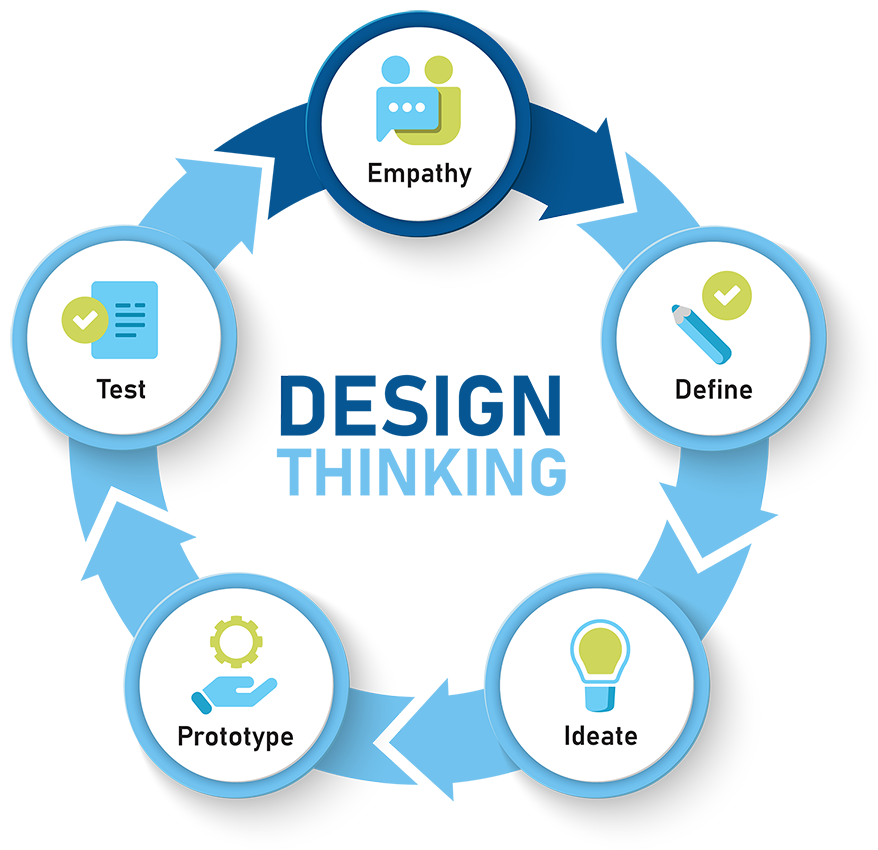EMPATHY: The Cornerstone of Design Thinking
Posted on February 27, 2024
By Nick Chiechi, President, CS Designworks

In the realm of design thinking, a methodology embraced by leading businesses and innovators, the journey begins with a critical first step: Empathy. This foundational phase is pivotal for business owners aiming to create solutions that resonate deeply with their customers. CS Designworks, a proponent of this approach, emphasizes empathy as integral to their process, ensuring that every project is not just a task but a mission to understand and solve real user needs.
 The Phases of Design Thinking
The Phases of Design Thinking
Empathy: Understanding your Users
Define: Framing the Problem
Ideate: Generating Solutions
Prototype: Bringing Ideas to Life
Test: Refining the Solution
Let’s Explore Empathy
Empathy goes beyond mere observation; it’s about connecting and understanding the emotions, experiences, and motivations of your users. It’s the process of putting yourself in your customers’ shoes to gain a profound understanding of their challenges, needs, and desires. This phase is about listening, observing, and engaging with your audience to uncover insights that are not immediately apparent.
For business owners, empathy is not just a phase but a mindset. It’s about building a culture that prioritizes the user’s perspective at every level of the decision-making process. This empathetic approach ensures that solutions are not only functionally effective but also emotionally resonant, fostering a deeper connection with the target audience.
Empathy in Design Thinking Involves Several Key Activities
Observation: Watching how users interact with products or services in their natural environment.
Engagement: Directly interacting with users through interviews or focus groups to understand their experiences and perspectives.
Immersion: Placing yourself in the user’s environment to better understand their daily challenges and needs.
These activities help business owners and designers gather valuable insights, which then inform every subsequent phase of the design thinking process. By starting with empathy, solutions are more likely to be user-centered, addressing real problems in meaningful ways.
Empathy in Action at CS Designworks
At CS Designworks, empathy is more than just the first step in design thinking; it’s a critical component of how they approach each assignment. By deeply understanding both the client and the end-user, CS Designworks ensures that every solution is crafted with genuine insight and consideration for the user’s needs. This approach not only leads to innovative solutions but also builds a strong foundation of trust and understanding between the business and its customers.
Empathy, The Heart of Creating Solutions
Empathy is the cornerstone of design thinking, setting the stage for innovation that truly meets user needs. For business owners, adopting an empathetic approach means going beyond the surface to uncover the real issues that affect their customers. By integrating empathy into every aspect of your business strategy, you can ensure that your solutions are not just practical but also meaningful, enhancing the lives of your users and fostering lasting connections. As CS Designworks demonstrates, empathy is not just the first step in a process but the heart of creating solutions that resonate on a deeper level.
Hypothetical Example of Empathy for a Commercial Real Estate Company |
|
Imagine a commercial real estate company, “UrbanSpace Innovators,” that specializes in developing office spaces in urban areas. Despite their success, they’ve noticed a decline in client satisfaction and occupancy rates. To address this, they decide to adopt an empathetic approach, inspired by the principles of design thinking, to deeply understand their clients’ needs and challenges. |
|
Observation Phase Engagement Phase Immersion Phase Empathy in Action Wrapping It All UpBy adopting an empathetic approach, UrbanSpace Innovators can transform their business model to better meet the needs of their clients. Their new office spaces are not just places to work; they are environments that support the growth and development of businesses and foster a strong sense of community. As a result, they see a significant increase in client satisfaction and occupancy rates, demonstrating the power of empathy in creating solutions that resonate deeply with users. This example illustrates how empathy, as the cornerstone of design thinking, can lead to innovative solutions that truly meet the needs of customers, enhancing their experience and satisfaction. |
Next Up: Phase 2 – Define
Next: Phase 2 – Define
Read our Design Thinking Overview
Join Our Blog Community
@CSDesignworks


